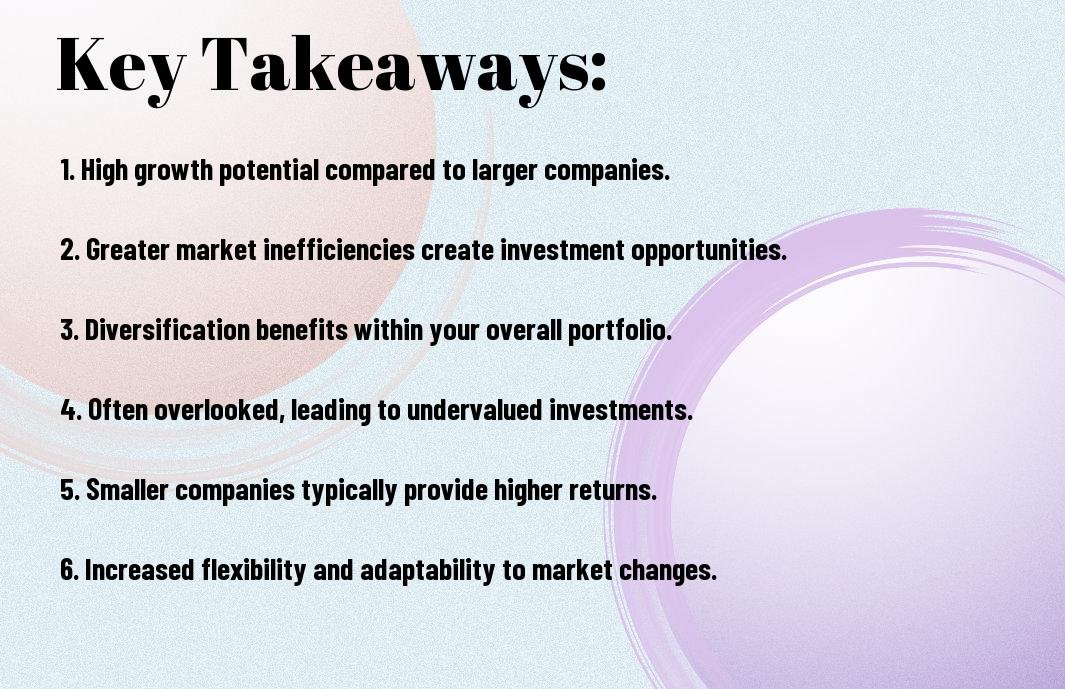Investing today goes beyond traditional financial metrics; it now requires you to consider Environmental, Social, and Governance (ESG) factors. These elements not only influence risk and return but also reflect a company’s commitment to ethical practices and sustainability. As an investor, understanding ESG factors can enhance your decision-making process and align your portfolio with your values. This blog post will explore how integrating ESG considerations into your investment strategy can potentially lead to better long-term outcomes while making a positive impact on society and the planet.
Key Takeaways:
- Informed Decision-Making: Incorporating ESG factors leads to more comprehensive analyses of companies, helping investors make better-informed choices that align with their values and financial goals.
- Risk Management: ESG considerations can reveal potential risks related to environmental sustainability, social responsibility, and corporate governance, allowing investors to mitigate exposure to investments that may face regulatory or reputational challenges.
- Long-Term Value: Companies with strong ESG practices are often better positioned for sustainable growth, which can enhance long-term profitability and appeal to a growing number of socially-conscious investors.

Understanding ESG Factors
A comprehensive understanding of Environmental, Social, and Governance (ESG) factors is crucial for modern investors seeking sustainable investment opportunities. These factors encompass:
- Environmental impact and sustainability initiatives
- Social responsibility and community engagement
- Corporate governance and ethical management practices
The Role of Environmental, Social and Governance (ESG) … factors plays a significant role in shaping investment decisions today.
Environmental Criteria
An crucial aspect of ESG investing, environmental criteria evaluate how a company performs as a steward of nature. This includes assessing the company’s energy use, waste management, pollution controls, and overall environmental impact on ecosystems and communities.
Social Criteria
Alongside environmental factors, social criteria examine how a company manages relationships with stakeholders. This includes employee treatment, community contributions, and customer satisfaction.
In addition, companies that prioritize social responsibility often see enhanced brand loyalty and employee engagement, which can lead to improved financial performance. As an investor, focusing on these social aspects can help you identify firms with positive reputations and long-term potential.
Governance Criteria
By considering governance criteria, you evaluate a company’s leadership, audited practices, and shareholder rights. This entails reviewing board diversity, executive compensation, and transparency in operations.
Also, solid governance practices are indicative of sound decision-making and ethical behavior. Companies with strong governance frameworks tend to minimize risks and maximize shareholder value, aligning with your investment goals for both returns and sustainability.
The Importance of ESG in Investment Decisions
Assuming you want to build a robust investment portfolio, understanding the role of ESG factors is necessary. Incorporating environmental, social, and governance criteria into your investment decisions not only aligns your choices with ethical values but also enhances your overall financial performance. By prioritizing companies demonstrating strong ESG practices, you can identify opportunities that reduce risk while fostering sustainable growth.
Risk Mitigation
Against a backdrop of increasing regulations and societal expectations, ESG factors serve as key indicators of potential risks. By investing in companies that excel in sustainability and ethical governance, you can protect your portfolio from reputational damage, legal penalties, and operational disruptions often associated with neglecting these factors.
Enhancing Long-term Returns
Across various sectors, evidence suggests that companies with robust ESG practices can outperform their peers over time. By focusing on sustainability and ethical governance, you position your investments for greater stability and long-term growth potential.
Consequently, companies committed to ESG principles often enjoy enhanced consumer trust, reduced costs, and improved efficiency. This solid foundation equips them to navigate market fluctuations more effectively, ultimately leading to superior returns for investors like you. As more and more investors recognize the benefits of integrating ESG factors, the shift towards sustainable investing continues to gain momentum, underscoring the importance of these criteria in shaping your investment strategy.
ESG Integration in Investment Strategies
To effectively integrate ESG factors into your investment strategies, you must consider not only financial performance but also the ethical, environmental, and social impact of your investments. Incorporating ESG metrics allows you to identify opportunities that align with your values while potentially enhancing long-term returns. By evaluating companies based on their ESG performance, you can make informed decisions that support sustainable practices and drive positive change in the market.
Screening and Selection
On your path to responsible investing, screening and selection play a significant role in filtering out companies that do not meet your ESG criteria. By employing negative screening, you can exclude industries that conflict with your values, such as fossil fuels or tobacco. Conversely, positive screening allows you to focus on companies that excel in sustainability practices or social responsibility, ensuring that your portfolio reflects your ethical considerations.
Shareholder Engagement
An important aspect of modern investing is shareholder engagement, where you can actively participate in influencing corporate behavior. By advocating for strong ESG practices, you not only contribute to corporate social responsibility but also enhance the long-term sustainability of your investments. Engaging with management teams, voting on shareholder proposals, and collaborating with other investors can amplify your voice in driving change within organizations.
Even small shareholders can leverage their influence through shareholder engagement. By participating in annual meetings, submitting proposals, or joining forces with like-minded investors, you can encourage companies to adopt more sustainable practices. It’s an opportunity for you to express your concerns regarding environmental issues, labor rights, or board diversity, ultimately guiding corporations towards a path of accountability and transparency. Active engagement can lead to significant improvements in ESG performance, benefiting society while strengthening your investment portfolio.
Challenges and Criticisms of ESG Investing
All investors should be aware that ESG investing is not without its challenges and criticisms. As the focus on environmental, social, and governance factors grows, concerns about the integrity of these practices arise, particularly regarding transparency and effective implementation. You may find that navigating these complexities can sometimes hinder your ability to make informed investment decisions.
Greenwashing Concerns
Concerns about greenwashing, where companies exaggerate or fabricate their ESG commitments, have become prominent. You might discover that some businesses mislead stakeholders with vague claims and inadequate evidence of their sustainable practices. This not only undermines your trust but also impacts the overall credibility of ESG investing.
Measurement and Reporting Issues
To effectively evaluate ESG factors, you’ll face challenges related to measurement and reporting. The lack of standardized metrics makes it difficult to compare companies’ performance in these areas, which can lead to confusion. You may struggle to discern genuine efforts from superficial initiatives when making investment choices.
Hence, the absence of universally accepted frameworks for ESG reporting complicates your decision-making process. Different companies may use varying criteria, leading to inconsistent assessments of their environmental and social impact. As an informed investor, you should seek out platforms and resources that provide transparent and comprehensive ESG data, helping you make better investment choices based on credible information.

The Future of ESG Investing
After years of growing interest, the future of ESG investing promises to be even more integrated into your investment strategies. As more investors recognize the significance of social and environmental considerations, you can expect increased demand for transparency and accountability. This evolution may lead to more standardized metrics and frameworks that make it easier for you to assess the ESG performance of your investments.
Trends and Innovations
Future developments in ESG investing will likely focus on cutting-edge technologies and innovative approaches that enhance data collection and analysis. You can anticipate a rise in artificial intelligence and machine learning tools that help you evaluate and compare ESG performances more effectively, enabling you to make informed choices that align with your values.
Regulatory Developments
Trends indicate that regulatory bodies will increasingly scrutinize ESG disclosures and practices. As a result, you may need to stay informed about evolving regulations affecting how companies report on their sustainability efforts, ensuring that your investments align with not just good intentions, but also compliance requirements.
Plus, you should keep an eye on the emphasis that regulators place on standardized ESG reporting. This may result in more reliable data for you, empowering informed investment decisions. As regulations become more stringent, you’ll find that reputable companies are more likely to prioritize ESG initiatives, further aligning your investment choices with your ethical priorities.
Final Words
Now, as you navigate the landscape of modern investing, integrating ESG factors into your strategy can not only align with your values but also enhance your portfolio’s resilience and performance. By evaluating environmental, social, and governance aspects, you position yourself to make informed decisions that contribute to sustainable growth and responsible stewardship. Embracing these factors can empower you to shape a more equitable future while potentially reaping financial rewards.
Q: What are ESG factors and why are they important in investing?
A: ESG stands for Environmental, Social, and Governance factors. These criteria help investors assess a company’s ethical impact and sustainability practices. Environmental factors consider a company’s performance in terms of ecological sustainability and climate impact. Social factors evaluate how a company manages relationships with stakeholders, including employees, suppliers, and communities. Governance factors assess company leadership, audits, internal controls, and shareholder rights. Integrating ESG factors into investment decisions is important as they can influence long-term financial performance and risk management, appealing to a growing base of socially-conscious investors.
Q: How can investors incorporate ESG factors into their investment strategies?
A: Investors can incorporate ESG factors into their investment strategies in several ways, including screening, active ownership, and thematic investing. Screening involves excluding companies that do not meet certain ESG criteria or focusing exclusively on those that excel in responsible practices. Active ownership may involve engaging with companies to encourage better ESG practices or voting on shareholder resolutions tied to ESG issues. Thematic investing allows investors to focus on sectors or trends that positively impact society or the environment, such as renewable energy or sustainable agriculture. These strategies enable investors to align their portfolios with their values while potentially capturing opportunities in financially robust companies.
Q: What evidence exists to support the financial performance of ESG investments?
A: Numerous studies have indicated that companies with strong ESG credentials often demonstrate better financial performance and lower risk compared to their peers. Research has shown a correlation between high ESG scores and superior operational performance and profitability. For instance, organizations with effective environmental practices may benefit from cost savings and reduced regulatory risks, while those with robust governance can avert scandals and attract investment. Additionally, rising interest from institutional investors and consumers towards sustainability suggests that companies that perform well on ESG criteria may have a competitive edge in attracting talent, customers, and investors, further supporting their financial outcomes.








